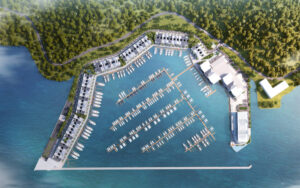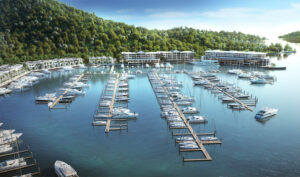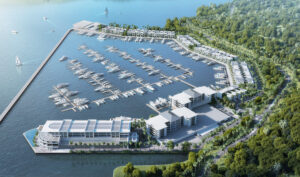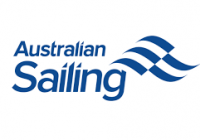Queensland has experienced a pandemic-led doubling in boat registrations with the pace of growth so strong that the number of boats hitting the water is increasing almost four times faster than the population in percentage terms, according to a new report.

The Aurelius Marina Research Report, which looks at the health of the marine sector across the state, has revealed that the recent growth in boat ownership has highlighted an urgent need for increased storage capacity, especially for on-water marina berths.
The report also reveals that boat registrations in Queensland rose 2.9 per cent in 2021, well above the 10-year average of 1.4 per cent. This compares with Queensland’s population growth of just 0.82 per cent, or almost a quarter of the pace for boat ownership.
“This recent strong uplift in demand for boats in Queensland was driven in part by the COVID-19 pandemic, given discretionary spend was put towards the purchase of items such as boats for recreational activities, as opposed to overseas holidays,” said the report.
Increased boat ownership led to a sustained high marina occupancy rate of 86 per cent in FY21, despite the pandemic.
“This result was very strong, especially in comparison to hotel occupancy rates in Australia during the same period,” said the report, which also noted that waiting lists for marina spaces at some properties increased over the period.
Anecdotal evidence and perceptions suggesting an increase in marina waiting lists was verified from the latest Health of the Australian Marina Industry (HAMI) survey released in June this year.
“Over half (57 per cent) of the marinas had a waiting list for boat storage spaces during their peak seasons, while 47 per cent had waiting lists during their off-peak seasons,” said the report.
Citing some of the findings from the HAMI survey, the report said boat storage fees also increased as a result, especially in Queensland. The report found that 35.7 per cent of Queensland marina operators lifted their fees by between 3 and 6 per cent in FY21 compared to a national average of 17.5 per cent of marina operators.
Queensland has a total of 10,678 wet berths, with 61 per cent of these located in the state’s south-east. Just 149 of total wet berths are currently listed for sale across the state – the equivalent of 1.4 per cent of total supply – with 100 of these located from Maryborough south to the Gold Coast.
The report identifies the coastal market north of Bundaberg as facing critical supply issues for marina berths. Including Bundaberg, the northern stretch of the state’s coast has 4,117 marina berths, with most of these located in North Queensland. With 49 marina berths for sale, the number of available berths represent just 1.2 per cent of supply.
Sam Wade, the managing director of the Shute Harbour Marina Resort, said the findings in the report highlight the severe shortage of wet berths for the marine industry in North Queensland.
“Infrastructure spending on new and existing facilities is vital if the marine industry in Queensland is to maintain its position as Australia’s boating capital,” said Mr Wade.
“The report identifies a sustained trend of growth in demand for marina berths, but it also reveals a trend to accommodate larger boats which is where the industry is heading. That is also putting pressure on existing supply of berthing space for smaller vessels.”
The $350 million Shute Harbour Marina Resort, one of the biggest residential-resort projects for North Queensland in more than a decade, is shoring up supply in North Queensland through the development of a mixed-use marina development with 395 wet berths from 10 to 30 metres. Larger berths of between 25 and 45 metres are available individually and in land, house, and berth packages.
The Aurelius Marina Research Report found that the trend of up-sizing to very large berths has diminished the availability of smaller berths in Queensland.
The average size of available marina berths in Queensland is now 13.5 metres, but the report found that the market had 8 per cent fewer boat berths under 10 metres in 2021 compared with 2013. It also found that the number of berths between 20 and 24 metres – the size most popular for mid-range luxury motor yachts – was down by 6 per cent over the same period.
In comparison, the number of marina berths accommodating boats longer than 24 metres – or edging into superyacht territory – has risen 35 per cent.













